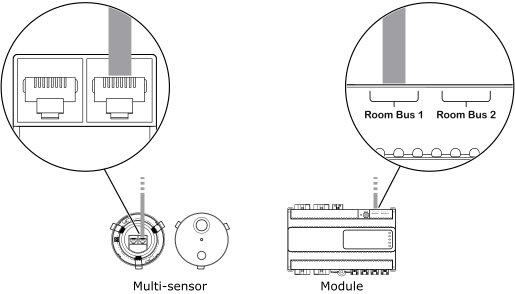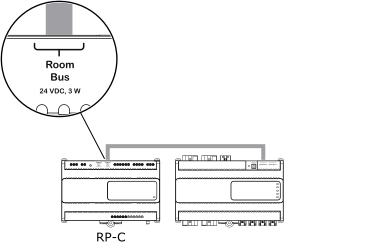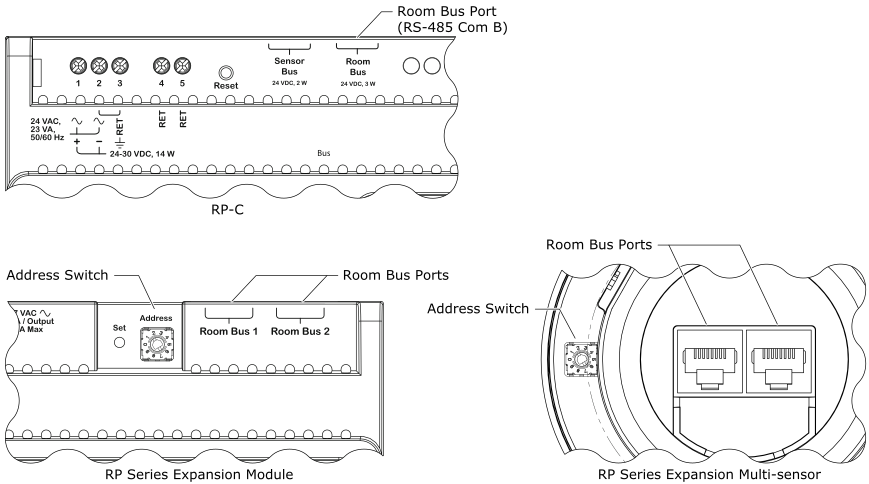
Comment faire pour
Connecting RP Controller Expansion Modules and Multi-sensors to RP-C
You connect RP controller expansion modules and multi-sensors to the RP-C room bus to provide the devices with power and communication from the RP-C controller.
Install the RP controller expansion module or multi-sensor and connect a Cat 5 (or higher) unshielded, straight-through wired cable with eight conductors (four twisted pairs) to one of the two RJ45 receptacles on the module or multi-sensor. Use a cable with the wire size (cross-sectional area) 22 to 26 AWG (0.34 to 0.14 mm²).
action_zoom_plus_stroke 
Connect the other end of the cable to the RP-C controller's RS-485 port that is configured for the room bus.
DéclarationBy default, the Room Bus port is configured for the room bus.
action_zoom_plus_stroke 
When an additional RP controller expansion module or multi-sensor is needed, install the device and connect the other end of the cable to the unused RJ45 receptacle on the previous module or multi-sensor.
DéclarationWhen connecting devices to the RP-C room bus through a daisy-chain configuration, it does not matter if the incoming and outgoing cables are connected to one or the other room bus port on the device.
action_zoom_plus_stroke 
Repeat step 3 to install additional devices up to the maximum number of six devices of the supported combination of RP controller expansion modules and multi-sensors. Pour plus d'informations, voir RP-C Room Bus .
Ensure that the rotary switch on each RP controller expansion module and multi-sensor is configured to give the device a unique room bus address in the range of 1 to 6.
Pour plus d'informations, voir Configuring the Room Bus Address for an RP Controller Expansion Module .
Pour plus d'informations, voir Configuring the Room Bus Address for an RP Controller Expansion Sensor Module .
Pour plus d'informations, voir RP Controller Expansion Module Room Bus Addressing .
 RP-Cs
RP-Cs
 RP-C Room Bus
RP-C Room Bus
 RP-C Communication Ports
RP-C Communication Ports
 Configuring the Room Bus Address for an RP Controller Expansion Module
Configuring the Room Bus Address for an RP Controller Expansion Module
 Configuring the Room Bus Address for an RP Controller Expansion Sensor Module
Configuring the Room Bus Address for an RP Controller Expansion Sensor Module
 RP Controller Expansion Module Room Bus Addressing
RP Controller Expansion Module Room Bus Addressing

